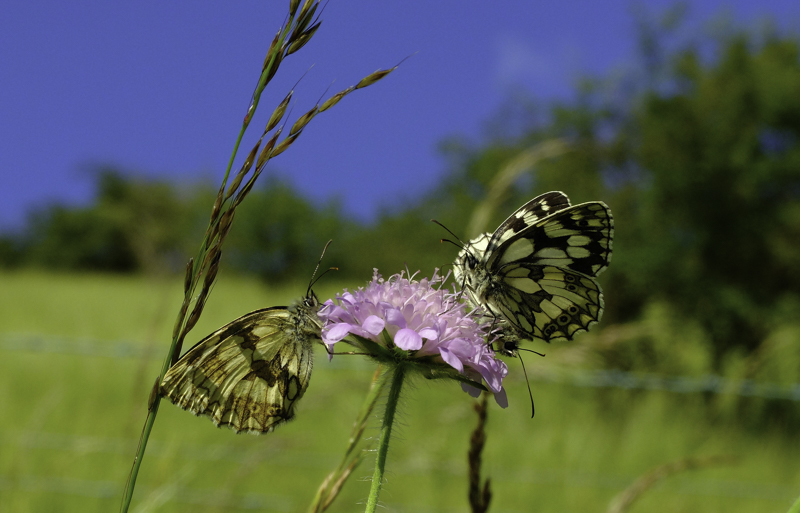Nature Notes: We reap what we sow

As part of our Trees for Life work, we support the Hagge Woods Trust, which manages the 25-acre Three Hagges Jubilee Wood, and are helping them achieve their aim to develop it into a beautiful and thriving community woodland. Biologist, Lin Hawthorne, is helping to lead this pioneering approach to woodland creation and shares progress from the project through her ‘Nature Notes’ blogs for Bettys. Read her latest words from the wood.
The end of summer and the onset of autumn always inspires thoughts of the coming year for me; ends and new beginnings. And at Three Hagges wood-meadow that includes choosing, collecting and sowing the seeds that will enhance the meadow and benefit and entice wildlife onto the site in years to come. Over the past three years, Bettys Trees for Life group have added over 5,000 flowering plants to the meadow to do just that.
We aim to extend the flowering period from early spring right through till the back end of the season. Some of our choices will also do the same thing for the garden, and, however tiny the space, it’s always possible to assist the survival of our many threatened pollinators: the bees, hoverflies and butterflies. Besides, it adds an element of joy to both garden and meadow to be able to observe these beautiful creatures at close quarters.
Some of our best choices for late in the season that are also lovely enough to sit well the garden have included Betony, Betonica officinalis, with crimson spikes of bloom between June and October, much favoured by bees and hoverflies. We notice that all members of this plant family, the Lamiaceae, make excellent nectar sources, and it includes the garden plants such as Stachys byzantina, Lambs’ Ears, salvias, lavenders, thymes, and other culinary herbs. But few prove as popular as Origanum – both wild and cultivated forms. The Wild marjoram, Origanum vulgare, is our choice for the meadow, and we’ve counted as many as a dozen pollinating bees and hoverflies per square foot of plant! There are smaller, less rumbustious garden forms, such as O. vulgare ‘Compactum’ and O. laevigatum ‘Herrenhausen’, that are equally enticing and easier to manage in smaller spaces.
I also have Viper’s bugloss, Echium vulgare, another meadow favourite, in my own garden – germinated accidentally from seeds brought home clinging to my socks. There is no clearer or more beautiful blue than this, and I have watched solitary bees gather nectar from it daily, systematically spiralling clockwise up the spike, one flower at a time.
We will be sowing a good deal more Greater Knapweed, Centaurea scabiosa, for the meadow, and I may just include some in my tiny garden to attract whole flocks of bumblebees, solitary bees and hoverflies. Above all, however, we will be sowing many more Field Scabious, Knautia arvensis, the nectar plant of choice for the Marbled White butterfly, Melanargia galathea. We live in hope of this lovely butterfly finding our meadow, where it may lay its eggs among the meadow grasses that are its larval food source.


